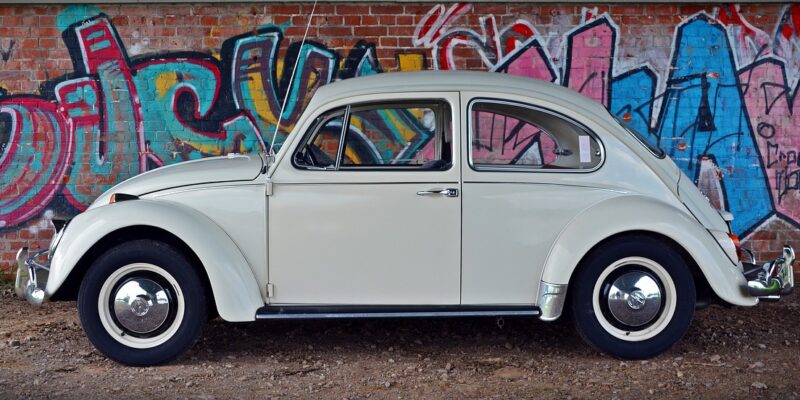A Beloved Bug’s Life: Celebrating 75 Years of Volkswagen Excellence
Volkswagen is an auto brand that has etched out a very memorable place in American culture! It was 75 years ago when a shipment of two Volkswagen type 1 vehicles arrived at New York Harbor. This year will mark a year-long campaign as a “love letter” to loyal American customers. Celebrating 75 years of Volkswagen excellence is a very noteworthy milestone!

Celebrating 75 Years of Volkswagen Excellence
The first item on the itinerary is a riveting Super Bowl surprise in Paradise, Nevada. This event has not been officially disclosed yet, but nothing is more traditional than that “on-air” time interval! Even though the brand has been a household name for decades, success didn’t come overnight.
When Dutch immigrant Ben Pon eagerly arrived in the Big Apple that day, he was riddled with doubt. It was the 1959 “Think Small” ad spot that warmed the public up to this quaint pair. This exercise in minimalism was one of the most genius ads of the century! The frenzied height of the Beetle craze was during the 1960’s.

Hippies and Herbies: the Cultural Phenomenon of VW in the 1960s
During the 1960s and 1970s, Volkswagen enjoyed over a million units sold annually. When Disney released the “Love Bug” film in 1968, it made the bug’s image truly iconic. Grossing a startling $51 million at the box office, it etched the bug’s image permanently into viewer’s minds. Many don’t know that the Volkswagen bug had to “audition its way to success!”
Attempts from Volvo, Toyota, and TVT were all in the running against the amiable pearl white Beetle. The Bug stole the spotlight by having a petlike and lovable charm. The casting crew was so enamored by it they wanted to reach out and pet it! Herbie’s trademark “53” racing number was a tribute to LA Dodgers player Don Drysdale.
How Volkswagen Transcended the Roads to Define an Era
The only other VW model that the bug competed for popularity with was the Type 2. This was the group-outing friendly “bus”, which became loved by artistic and free-spirited consumers. Many iconic images still remain of buses and bugs at the famed Woodstock gathering.
In 2019, Woodstock had its 50th birthday and a few very cool microbuses enjoyed exorbitant auction bids. When Jerry Garcia died in 1995, VW ran a spot featuring a microbus shedding a tear. The Microbus became a symbol of rising levels of angst due to wars and dominant capitalism. It also provided a cheery alternative to high-powered Detroit muscle.
Carrot and Stick: The Rabbit’s Winning Formula
VW’s first U.S. plant was built in Westmoreland, PA in 1978. This was the site where more than a million Rabbits would be constructed. After the record-breaking success of the Beetle, VW focused on an affordable and reliable counterpart. After the Rabbit’s creation, front-wheel drive became widely accepted.
The oil crisis of the 1970s was instrumental in the Rabbit’s 60 mph diesel allure. A much sportier Rabbit GTI allowed enthusiasts to enjoy “hot hatch” performance on a budget. The first-generation Rabbit was praised for its lightness and precise simplicity. At this point, replacing the Beetle had become necessary for the brand’s survival.
Volkswagen’s Red, White, and Vroom: A Love Affair with the USA
The water-cooled front-wheel drive design rang true with American drivers who were already impressed by VW’s built quality. The GTI version debuted in 1983 and was still built in Pennsylvania. Its creation also initiated another automotive history landmark, as it was one of the first small sports cars to feature fuel injection.
In 2004, Sports Car International heralded the GTI mk1 as “The 3rd best car of the 1980s.” The Rabbit was immediately loved for its squared front-end styling and “snowflake” alloy wheels. The Rabbit has achieved cult status amongst many various types of collectors. The Car and Driver experts claimed that the 1983 Rabbit was “a fast, entertaining, high-quality car built at an affordable price.”

A Memorable Icon Built on Fundamental Principles:
Even as the Beetle and microbus were great examples of VW’s capability during the early years, the Rabbit was known for being practical and democratic. Its creation saw many American drivers valuing the same things as European buyers. However, one Motor Trend article detailed a buyer’s rush to modify it as they didn’t like the Rabbit’s personality.
Many diehard fans love Volkswagen cars to the moon and back! Some other drivers have claimed models such as the Rabbit “felt like an appliance.” Let us know what you think of the Volkswagen brand in the comments below, or check out another article for a complete VW headlight guide.














